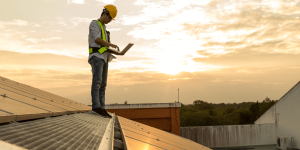FER Z Decree: New rules and opportunities for the development of renewables in Italy
The FER Z Decree introduces a new model of support for renewables, with competitive auctions and long-term contracts to foster growth, stability, and investment.

With the approval of the FER Z Decree , Italy takes an important step in the reform of support mechanisms for renewable energy sources .
The measure, long-awaited by the sector, defines a more flexible and market-oriented system, based on competitive procedures and contracts for difference (CfD) , with the aim of incentivizing clean energy production and stimulating private investment.
Unlike previous incentive schemes, the FER Z shifts the focus from the individual plant to the overall installed capacity, allowing the growth of the renewable energy park to be planned in a coordinated and sustainable manner.
A model designed to accelerate the achievement of national decarbonization targets and to consolidate the role of energy and HVAC companies in this transition.
How the new support mechanism works
The Decree provides for the activation of public auctions managed by the GSE , through which the operators offering renewable energy at the most advantageous conditions for the system will be selected.
The selected projects will benefit from long-term contracts (up to 20 years), which will ensure economic stability and greater revenue predictability.
Among the main new features:
- the establishment of a national register of plants , to ensure traceability and transparency in production;
- the possibility of participation for various renewable technologies , from photovoltaic to wind, up to hybrid systems and integrated systems with storage;
- an extended duration until 2029 , which offers the market a stable time horizon for investment planning.
This approach, closer to market logic, aims to promote balanced growth in renewable capacity , reducing dependence on fossil fuels and promoting more distributed and digital energy production.
Implications for designers and operators in the energy-climate sector
For designers, installers, and companies operating in the air conditioning and energy efficiency sectors, the FER Z Decree opens up new operational perspectives.
The growing diffusion of renewable energy production plants will require integrated planning capable of combining generation, storage, and intelligent management of energy flows.
Those working in the HVAC and energy supply chain will be able to contribute directly to the creation of multi-source systems , where photovoltaics, heat pumps, thermal and electrical storage systems work together to optimize consumption.
Furthermore, the introduction of long-term contracts provides a more solid basis for planning structural investments, both for energy companies and for end customers in the public and private sectors.
Towards a more stable and competitive energy system
With the FER Z Decree, the framework of national policies for renewables becomes clearer and more predictable.
The goal is to create a stable and competitive market capable of supporting the diffusion of clean technologies, improving energy security and reducing emissions.
For the climate and plant design sector, this evolution represents a new phase of collaboration between generation and efficient energy use, where sustainability is no longer just a goal, but a structural condition of the project.
Related Focus







